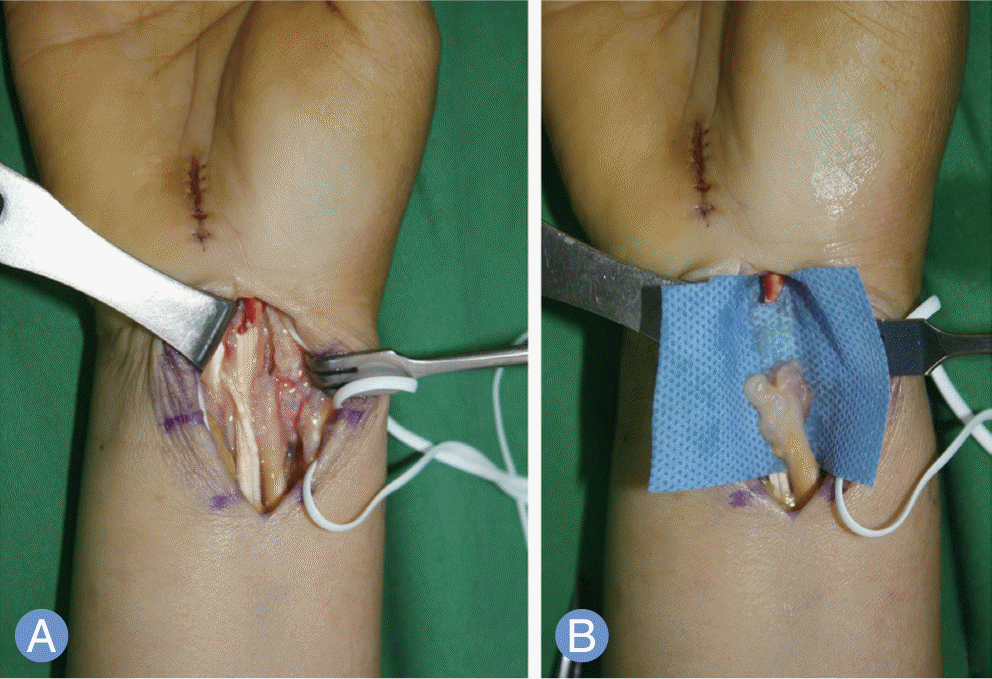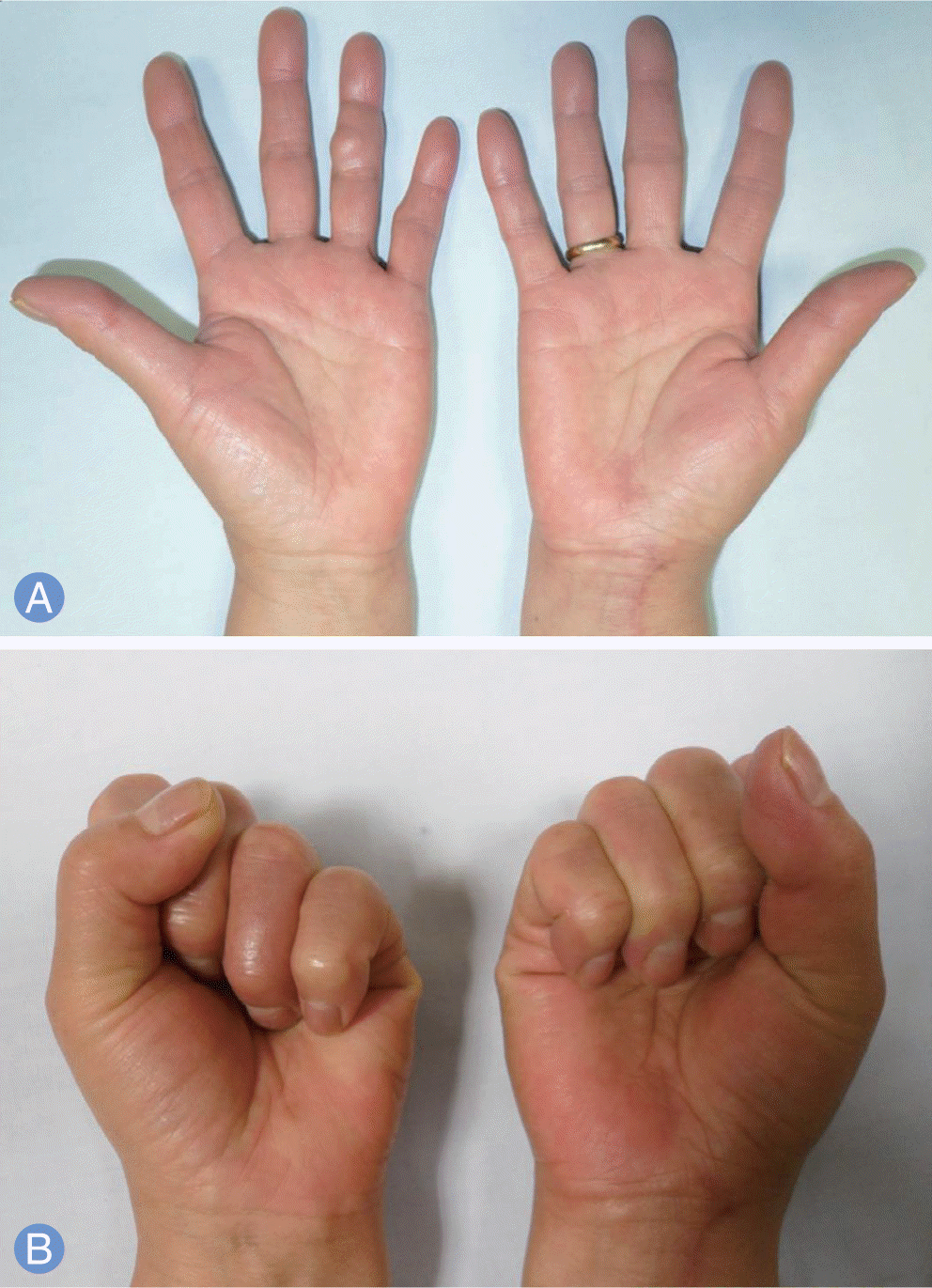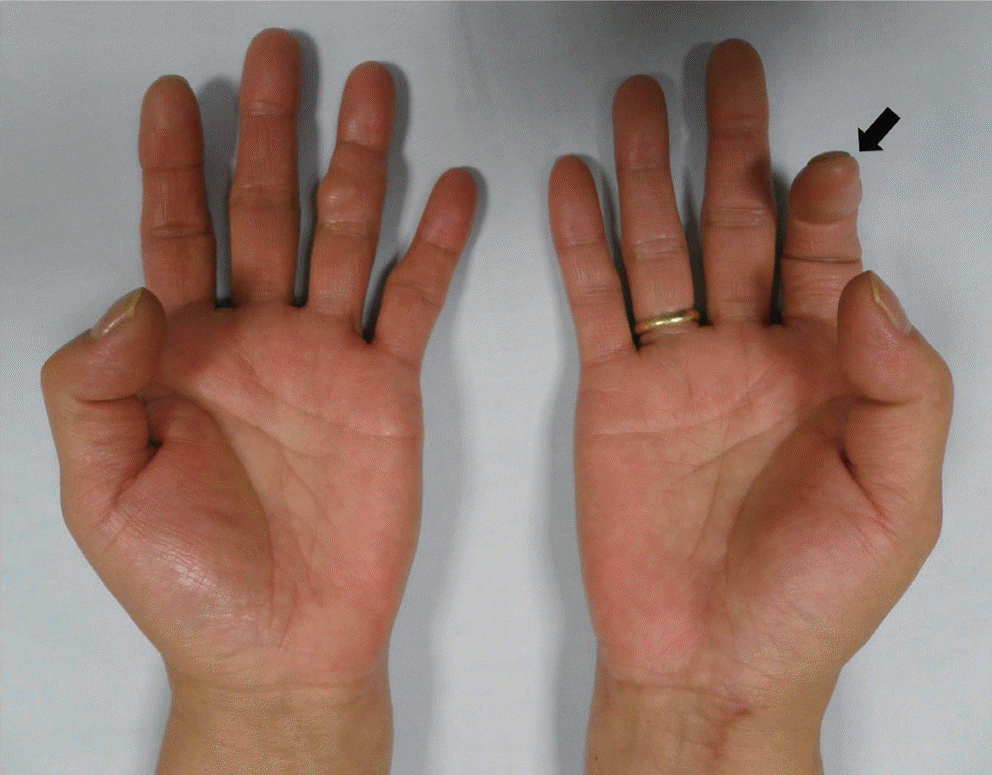Abstract
Linburg-Comstock phenomenon is defined simultaneous flexion of thumb and other fingers. The coupling of the flexor pollicis longus and flexor digitorum profundus tendons is the main pathognomonic feature of this lesion. Typically, pain is noted at the distal level of the forearm at the site of the abnormal connection. We describe a case of flexor pollicis longus tendon rupture who undergoes a carpal tunnel release, and report the Linburg-Comstock syndrome after the flexor tendon reconstruction.
Go to : 
REFERENCES
1. Linburg RM, Comstock BE. Anomalous tendon slips from the flexor pollicis longus to the flexor digitorum profundus. J Hand Surg Am. 1979; 4:79–83.
2. Miller G, Peck F, Brain A, Watson S. Musculotendinous anomalies in musician and nonmusician hands. Plast Reconstr Surg. 2003; 112:1815–22.

3. Badhe S, Lynch J, Thorpe SK, Bainbridge LC. Operative treatment of Linburg-Comstock syndrome. J Bone Joint Surg Br. 2010; 92:1278–81.

4. Lin B, Sreedharan S, Chin AY. Linburg-Comstock phenomenon following forearm laceration. Hand Surg. 2012; 17:221–4.

5. Boeckstyns ME, Sorensen AI. Does endoscopic carpal tunnel release have a higher rate of complications than open carpal tunnel release? An analysis of published series. J Hand Surg Br. 1999; 24:9–15.
6. Spar I. Flexor tendon ruptures in the rheumatoid hand: bilateral flexor pollicis longus rupture. Clin Orthop Relat Res. 1977; (127):186–8.
7. Christodoulou L, Yang XB, Chamberlain ST. Rupture of flexor pollicis longus after carpal tunnel decompression. Injury. 2000; 31:744–5.

8. Hamitouche K, Roux JL, Baeten Y, Allieu Y. Linburg-Comstock syndrome: epidemiologic and anatomic study, clinical applications. Chir Main. 2000; 19:109–15.
9. Ortak T, Uraloglu M, Orbay H, Koc MN, Sensoz O. Linburg-Comstock anomaly: seems to be harmless but may be fatal. Plast Reconstr Surg. 2007; 119:1976–7.

Go to : 
 | Fig. 1.
(A) Severe tenosynovitis and adhesion were seen in radial side of the wrist. (B) A flexor pollicis longus tendon was ruptured and retracted. |




 PDF
PDF ePub
ePub Citation
Citation Print
Print




 XML Download
XML Download